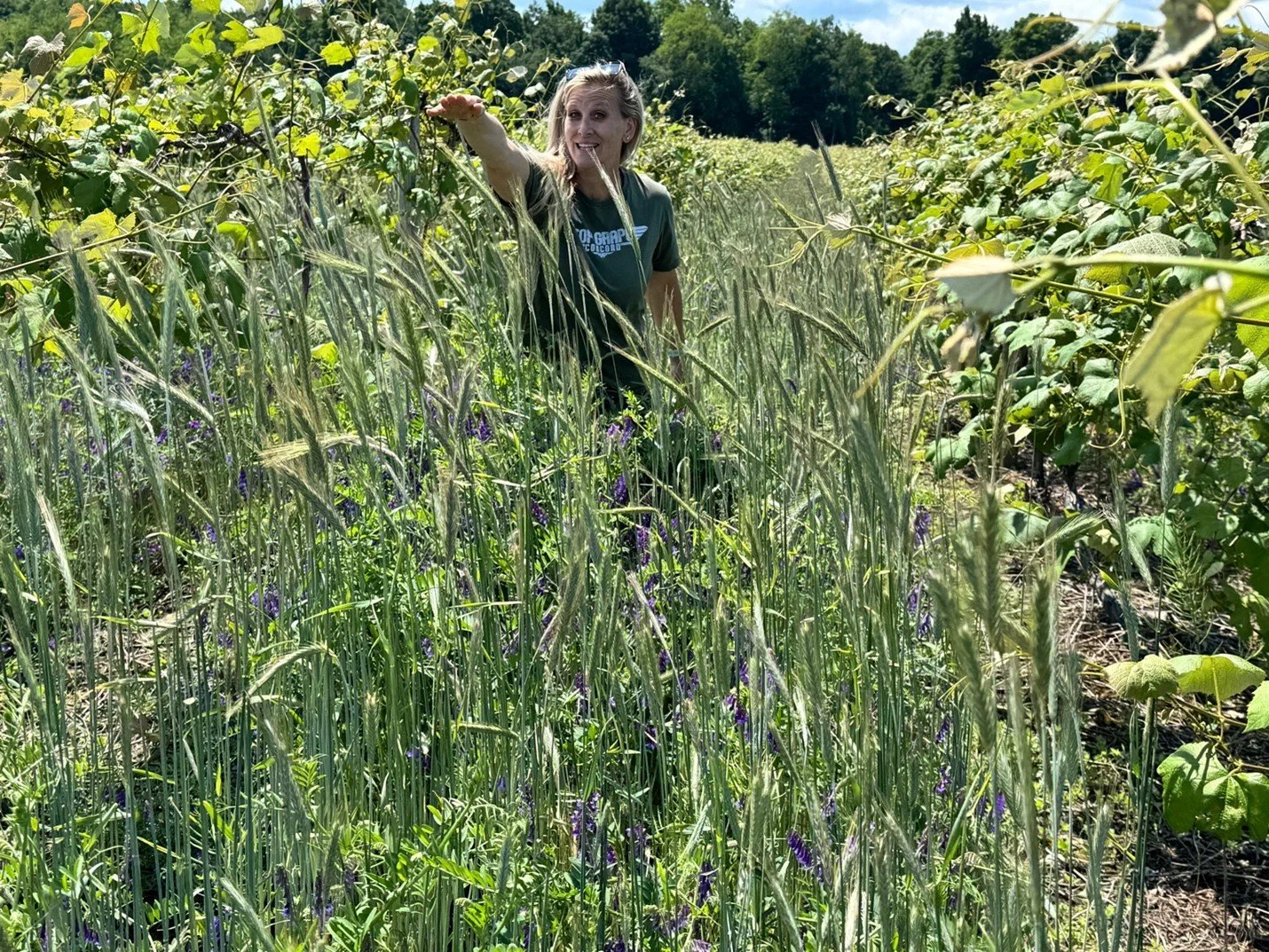June 26, 2025
Written by Jennifer Phillips Russo
The past few years, I have been conducting a floor management research project on both gravel and heavy silt loam locations. We helped with the NY Soil Health Alliance’s Soil Health Day at the Betts Farm location last summer. This project is nearing its close. As part of this work, I would like to survey our grower population to acquire data on past and current floor management strategies, reasons for either implementing cover crop strategies or not, and your perspective on herbicide or fertilizer habits. This survey is a quick 15 multiple-choice survey that will inform my research. Please click here for the Cover Crop Survey. These questions build a comprehensive picture of grower practices, motivations, knowledge, and economic outcomes related to cover cropping, a key sustainable soil management tool.
Conducting grower surveys about cover crop use in vineyards is important to this research for several reasons:
The results help to gather data on current cover crop practices among growers, including what species are being used, planting and termination methods, and overall management strategies.
Growers can share their experiences regarding the benefits of cover crops, such as soil health improvement, weed suppression, moisture retention, and pest management.
Surveys can reveal challenges and barriers that growers face, such as cost, labor, or lack of knowledge, which can inform future education and support efforts.
Photo 1. Jennifer Phillips Russo standing in a multi-species cover-cropped middle row in a Concord vineyard with cereal rye and hairy vetch.
Current vineyard floor management practices in the Lake Erie AVA, relying heavily on synthetic fertilizers and herbicides, are unsustainable, contributing to herbicide resistance, degrading soil health, and increasing vulnerability to climate change impacts. One goal of this work is to develop strategies to transition to sustainable viticulture practices that improve soil health, enhance resilience to climate change, and maintain economic viability.
Grapes are adaptable to a wide range of soil types, but soil characteristics such as internal drainage, soil texture, depth, water holding capacity, and soil chemical characteristics such as soil pH will strongly influence growth, productivity, and quality. Superior sites will have well-drained, sandy to gravelly or silty loam texture, moderate water-holding capacity, and soil pH ranging between 5.5 and 7.0. Most sites will have some soil limitations that may need correction.
The increasing reliance on herbicides, especially with the emergence of resistance, adds another layer of concern. There can be detrimental effects of the "weed-free" practice on soil health, and it should be investigated. The lower pH caused by conventional management strategies reduces organic matter and contributes to poor soil structure, creating a vicious cycle that necessitates even more fertilizer and herbicide use, exacerbating the problem.
Common limitations in poor soil health can include poor drainage, which greatly reduces growth and favors winter injury. Vine roots cannot grow, take up nutrients, or respire in waterlogged soils. Seasonal water tables are often highest in the spring, which can delay growth and development during rapid shoot growth.
Low pH soils can restrict the availability of soil nutrients, leading to deficiencies and aluminum toxicity to roots, and low water in drought-like conditions can lead to stress. Heavy clay soils or impermeable soil layers can restrict root growth, limiting vine growth, which can be alleviated through irrigation, which is not economically feasible to Concord grape growers.
The downward spiral in soil health, root competition, and climate change impacts are serious threats to Concord production sustainability. The lack of relevant research specifically for non-irrigated Concord grapes further complicates the issue, forcing growers to look outside the grape commodity for guidance.
Developing new cover cropping strategies tailored to Concord grapes is crucial. This research will not only benefit Concord growers directly but also has the potential to inform sustainable practices across other agricultural commodities. The translation of these findings to other crops highlights the broader impact and importance of this work. This is a critical area of research, and its success could have far-reaching positive consequences. By systematically comparing different floor management strategies and measuring their effects on key parameters, this experiment can provide valuable insights into how to improve soil health, vine capacity, and economic sustainability in non-irrigated juice grape production.

